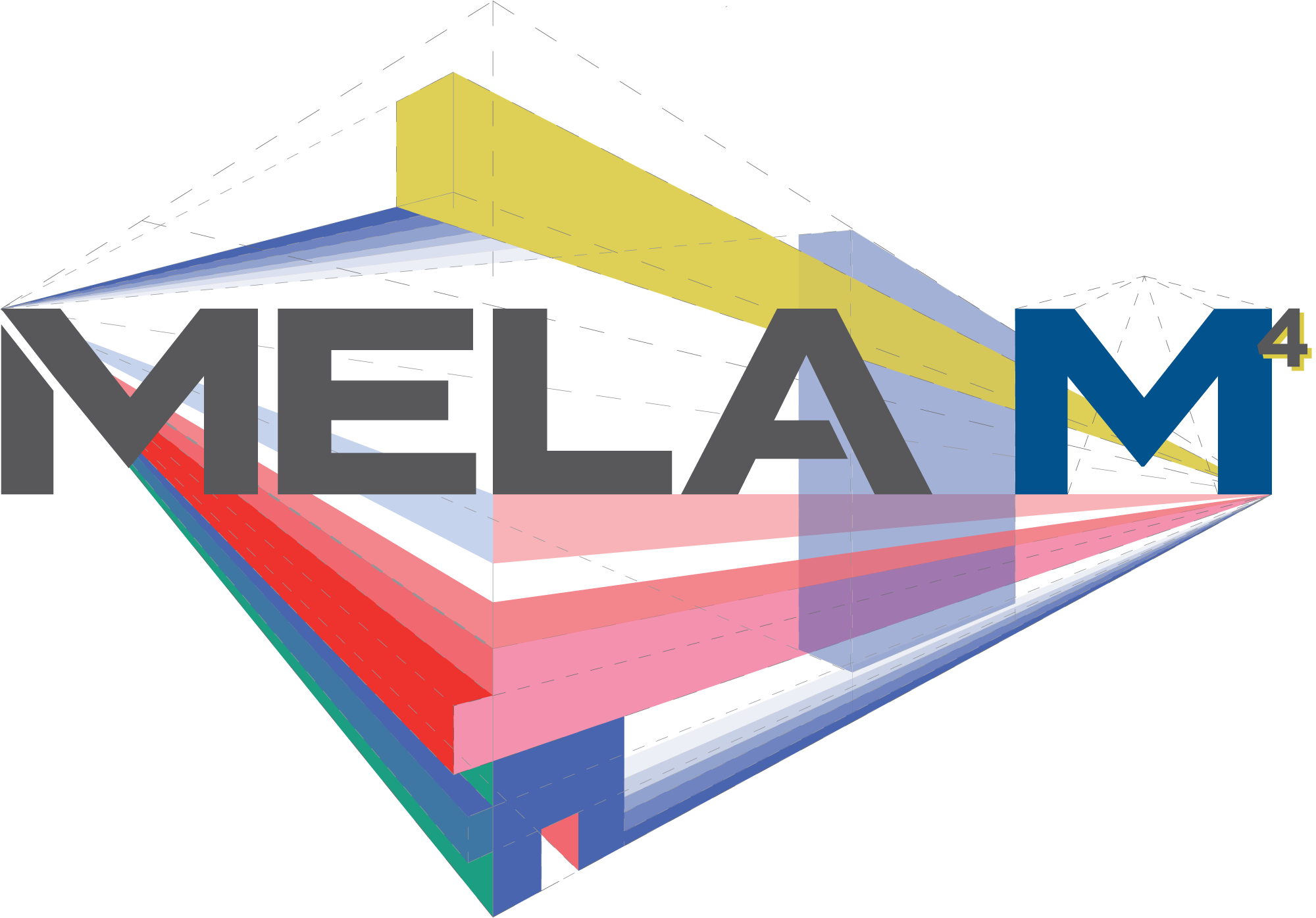Well known on three continents for her geometric installations, Mela M is a Postmodern inheritor of a Modernist legacy. Her most immediate formal ancestor may be El Lissitzky whose famed Proun Room debuted in 1923, one hundred years ago. “Prouns,” as the artist explained, existed in a liminal zone, caught someplace between drawing and sculpture.
In using the evocative metaphor of traveling, El Lissitzky explained that his painted forms were “the station where one changes from painting to architecture.” In other words, art has moved off the wall—ceased to be an inert painting—to a new site—becoming the wall or architecture itself.
A twenty-first century builder, Mela M is a constructor in the pure sense of the word. Each object she makes is a part of a greater metropolis that she has redefined as imaginary dislocations. Imagine an agglomeration of built objects, carefully constructed so as to defy identification. Think of forms that have no discernable function, existing solely in terms of color. Hue, rather than functionality, rules these shapes that share certain basic characteristics.
The fragments begin as flat pieces of raw wood, rectangles projecting flanges like fins. Rather than seeming inert or frozen, the cutouts of Mela M seem to be alive and growing and expanding but for what purpose? As we enter into this broken metropolis, we are forced to make our own interpretations.
The viewer is placed in a zone of ambivalence: is this a living being, throwing off extensions or is this a mere dead fragment, broken from something larger that is now lost? What this artist is doing is making art by presenting building as an activity, legitimate in and of itself.
Although any one of these objects can and does stand on its own as a work of art, each element is also destined to be one part that composes in a collective mass. Mela M creates what appear to be building blocks, but, while they can conceptually connect with each other, the parts cannot make a whole.
The swirling metropolis of Mela M is in turmoil, spewing fragments that transform the gallery into a space for the viewer to wander through a tsunami of forms and color.
Dr. Jeanne S. M. Willette
Los Angeles area writer and critic.
November 8th, 2018
